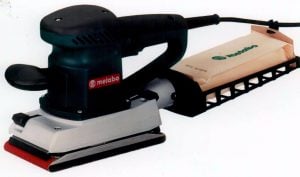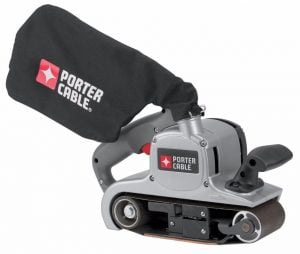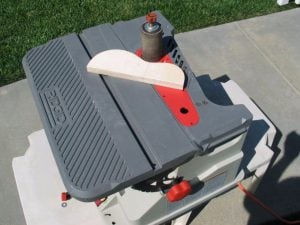Sander-Review was created with one thing in mind > to give consumers the best unbiased information pertaining to sanders you will find on the internet. Built by consumers for consumers, this site offers only the best information including product reviews, consumer ratings, How To’s, tips, and so much more.
There once was a time when sanding was one of the most hated and tedious woodworking practices, but this was before true power tools were introduced. The sander has since become one of the favorite power tools for DIY enthusiasts and those within the profession itself, but with all-things considered there is look at before tackling your next job.
[AdSense-A]
This site attempts to answer many of those burning questions which may include:
- What are the different types of sanders?
- What are the differences between the types of sanders?
- Where is the most trusted place to buy sanders?
- How to use a sander?
- Features of sanders?
- How to choose the right kind of sander?
- What safety concerns may arise while using a sander?
- What replacement parts are needed for sanders and where can I find them?
- How to clean a sander?

What is a Sander, How is it Used, and What Should I Consider?
In short, a sander is considered a power tool which is used to mechanically smooth abrasive surfaces to a specific and desired smoothness. Years ago, sanding was done completely by hand, and if anyone remembers those days it was a job that no one, and I mean no one wanted. Most sanders of today utilize electric or battery power while others used in auto body shops may used compressed air, but all have the same premise > sanding.
The use of a sander is quite simple as the sander itself is a power tool which works in conjunction with sander paper which is attached. The internal mechanism of the sander allows the sandpaper to move in rapid fashion along a surface such as wood while making the intended surface smoother. Depending on many variables such as the type of sander, the grit of the sand paper, size, speed, volts, and much more which are all something we’ll discuss in much greater detail below.
Types of Sanders and Uses
One might think that one sander will be enough, but when looking at the diversity at the many types of sander this couldn’t be any further from the truth. Different sanders are best suited for different purposes, and depending on the specific result or job you’re looking for you may want to consider all of your options.
Conventionally speaking, there are five types of sanders which are all best suited for specific projects. It’s not at all uncommon for woodworker enthusiasts to have multiple sanders of each type varying in size, power, weight, features, and of course, price. For those DIY enthusiasts who like to dabble here and there around the house, typically you can by with just two different types of sanders.
Below, we detail the five main types of power sanders, their uses, and how much you might expect to pay.
Orbital Finishing Sanders
You’ve all probably seen if not used an orbital sander as it’s the most common type. Many would say its best suited for beginners as the ease of use, price, and versatility makes it a top choice for both enthusiasts and common people alike. This sander would not be considered a top choice for all-inclusive projects as its better suited finer details, and no so much for hard, thick, and super-abrasive surfaces.
An orbital sander is very lightweight, and out of all five types is the one that will not damage the wood you’re actually sanding. It’s very easy to control, use, switch out the paper, and comparatively speaking is relatively cheap. Orbital sanders are square and hold the sand paper using two spring loaded clips against its square surface. The orbital action is what does the sanding which can be done in any direction, even against the grain.
[AdSense-B]
Random-Orbit Sanders
Random-Orbit Sanders are a specialized type of finishing sander and has subtle differences when comparing it to an orbital sander. Most notably, a random-orbit sander has a round pad, but uses the same orbital motion which makes it a great choice for projects that finishing touch. Another difference between the two is the orbital sander is easier to control than its circular counterpart.
Most random-orbit sanders utilize sandpaper that has an adhesive backing while others use something called a hook and loop. Most woodworkers including us would recommend hook and loop disks due to the ease of changing, but there more expensive then the adhesive or (PSA) pressure-sensitive adhesive disks.
Check Out the Top Random Orbit Sanders
Belt Sanders
If you’re looking for a power sander with sheer power, force, and something that can handle the biggest job, then a belt sander is just what you’re looking for. Many call it the most dangerous power tool you can own, and after handling one for the first time you will surely agree.
A belt sander is best suited for rough, large, and flat surfaces. They can cover the most real estate in the quickest amount of time and have even been known for sanding multiple boards linked together at the same time. Besides wood, this type of sander is also adapted to sanding abrasive surfaces such as paint, drywall, or stain.
Belt sanders come in four different sizes ranging from 3 x 18 to 4 x 24 inches. The ease of controls is very noticeable from size to size as the smaller 3 x 18 is much easier while the larger 4 x 24 is typically reserved for experienced woodworkers.
Due to the sheer force of these types of sanders, be sure to sand with the grain at all times. This differs from orbital sanders where you can sand with or against the grain of the wood as this type of sander will cause noticeable scratches, or abrasions. A good rule of thumb is to always start with coarser paper such as 60 grit and work your way up to finer grit paper.
Check Out the Top Belt Sanders
Belt and Disk Sanders
If you’re looking for a versatile sander that has more than one purpose, then consider a belt and disk sander. Just as the name suggests, this dual purpose sander offers the same amenities of both a belt and disk sander in one small, bench-top-tool.
In most belt and disk sanders, the belt sander can be adjusted to sand vertically, horizontally, or somewhere in the middle. The disk sander ranges between 6 and 10” and is perfect for sanding curved or square ends
Check Out the Top Disc Sanders
Oscillating Spindle Sanders
Oscillating spindle sanders are for those specialized and unique sanding situations. These types of sanders are typically reserved for enthusiasts and true woodworking professionals as this isn’t exactly a tool you’ll find laying around in someone’s garage.
The perfect power sander for irregular shapes, curves, and other a-typical angles, the oscillating motion helps make some of the most unique contours. This sander is built into a table that sands in an oscillating motion both up and down at the same time with interchangeable drums which allow you to change the diameter.
Check Out the Top Oscillating Spindle Sanders
[AdSense-A]
